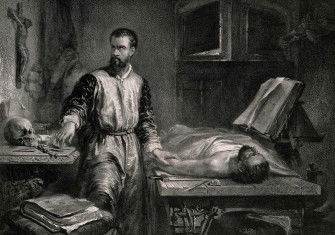Lifting the Flap
Anatomical pop-up books, introduced in the 16th century, took anatomy out of the lecture hall and into the home.

We think of reading as a primarily mental activity. Medieval and early modern audiences saw reading as a physical activity as well. They did not just turn the pages of their manuscripts. They wrote in the margins, underlined and annotated, used blank spaces for recipes and handwriting practice, kissed religious images and copied out quotations. Pop-up science texts evoke a period when reading always meant physical engagement, and remind us that reading was – and still is – a physical, interactive experience.







